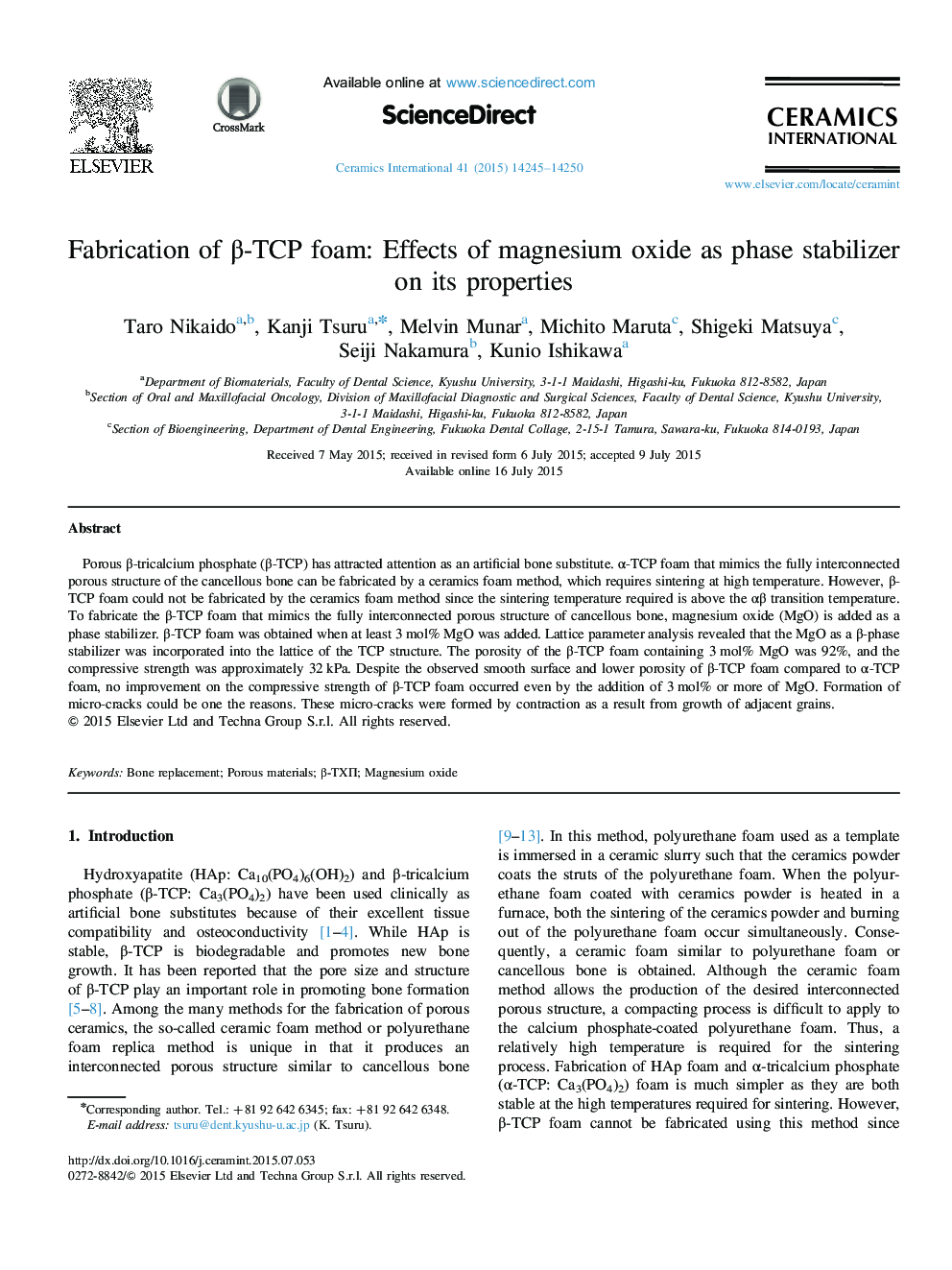| Article ID | Journal | Published Year | Pages | File Type |
|---|---|---|---|---|
| 1459336 | Ceramics International | 2015 | 6 Pages |
Porous β-tricalcium phosphate (β-TCP) has attracted attention as an artificial bone substitute. α-TCP foam that mimics the fully interconnected porous structure of the cancellous bone can be fabricated by a ceramics foam method, which requires sintering at high temperature. However, β-TCP foam could not be fabricated by the ceramics foam method since the sintering temperature required is above the αβ transition temperature. To fabricate the β-TCP foam that mimics the fully interconnected porous structure of cancellous bone, magnesium oxide (MgO) is added as a phase stabilizer. β-TCP foam was obtained when at least 3 mol% MgO was added. Lattice parameter analysis revealed that the MgO as a β-phase stabilizer was incorporated into the lattice of the TCP structure. The porosity of the β-TCP foam containing 3 mol% MgO was 92%, and the compressive strength was approximately 32 kPa. Despite the observed smooth surface and lower porosity of β-TCP foam compared to α-TCP foam, no improvement on the compressive strength of β-TCP foam occurred even by the addition of 3 mol% or more of MgO. Formation of micro-cracks could be one the reasons. These micro-cracks were formed by contraction as a result from growth of adjacent grains.
